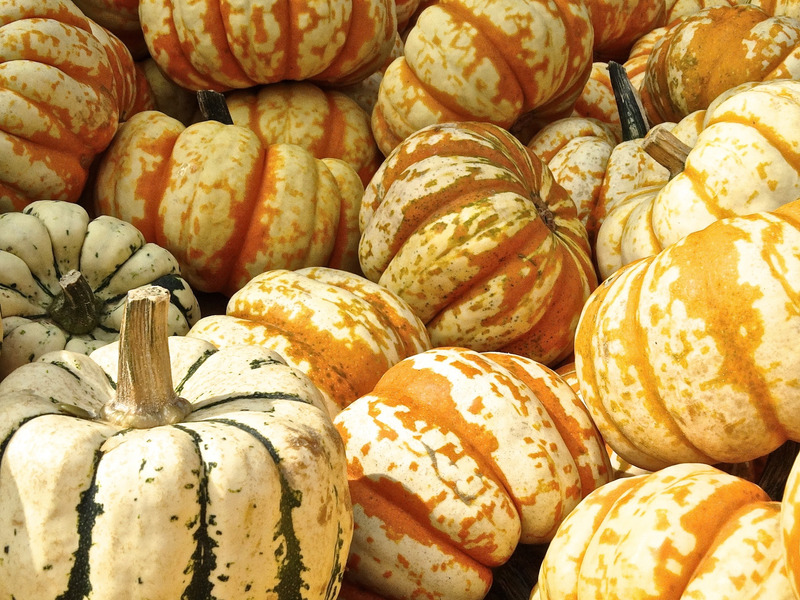November Gardening To-Dos

This is the month that feels like fall. If it cools down enough at night, we may even see some fall color in the trees and shrubs. Of course that also means that deciduous plants will begin to shed their leaves in earnest, providing plenty of raw material for homemade mulch and compost. The average first freeze for Austin (Camp Mabry) is anywhere from November 29th through December 5th depending on the period of record. See below for other things that should be on your November gardening to-dos.
Things to Do in the Garden For November |
|
FERTILIZE |
Only cool-season vegetables should be fertilized, as needed, with a moderate application of 3-1-2 or 4-1-2 ratio fertilizer. |
WATER |
Water everything well before a freeze, but avoid overwatering. Irrigate only in the absence of rainfall, and test for dryness before turning on the hose. |
TRANSPLANT |
Strawberries can be transplanted into moist soil. Cool season annuals can be added to containers, just be prepared to protect them from frost. Keep adding bulbs and don’t forget to tuck a few into your planted containers that will be spending the winter outdoors. This is the last month to transplant container grown roses. Add hardy vines and groundcovers so that they have the winter to develop the extensive root systems they’ll need next summer. |
SOIL |
Check mulch and replenish if necessary. Stockpile leaves for mulch and composting all year. Prepare vegetable beds that won’t be planted with a mulch of leaves and compost to cover the soil completely. Take advantage of good weather to build up soil in other beds so they are ready for winter plantings. |
LAWNS |
Use a mulching mower instead of raking leaves off the grass. Or, use the lawnmower and bag attachment to shred leaves for the compost pile. |
DISEASES/PESTS TO LOOK FOR |
Watch roots or removed annuals for nematodes (knots on the roots.) |
MAINTENANCE |
Cut back fall bloomers like asters and chrysanthemums all the way to the ground. Remove long, gangly shoots on shrubs. Remove dead and damaged wood from shrubs and trees to reduce debris from windstorms. |
IN THE VEGETABLE GARDEN |
Plant root crops, such as carrots, beets, radishes and turnips in small sections for continual harvest. After seeds sprout and they get their first set of true leaves, thin so they are 2-3” apart. The thinned tops are edible and can be added to salads, soups, sandwiches, wraps, casseroles or quiche. Keep root crops well-watered for best flavor. Plant seeds of cilantro, parsley, dill, lettuce, spinach, and fava beans. Harvest basil, parsley, and cilantro before the temperatures fall below 40°. Harvest tomatoes and other cold-sensitive veggies before the first frost. Cover and protect the soil in unused vegetable beds with mulch, leaves, straw or cover crops. Winter cover crop options include cereal rye, hairy vetch, fava beans, clover or Austrian winter peas. See the full Vegetable Garden Planting Guide (Español, 繁体中文) and Vegetable Varieties for Central Texas. |
Your November Indoor Gardening Checklist |
|
FERTILIZE |
Refrain from fertilizing. |
WATER |
Decrease the amount of water your plants receive while they are inside. |
DISEASES/PESTS TO LOOK FOR |
Pest insects are more likely to be encountered on indoor plants than diseases because the interior environment rarely offers favorable conditions for foliar diseases to develop. However, when plants are grown under stressful conditions (such as low light and excess water), soil-borne pathogens often develop |
 As a contributor to Central Texas Gardener (CTG), Daphne Richards, County Extension Agent-Horticulture, answers questions and shares knowledge on new and tried & true plants for Central Texas. Check out some of our favorites for November!
As a contributor to Central Texas Gardener (CTG), Daphne Richards, County Extension Agent-Horticulture, answers questions and shares knowledge on new and tried & true plants for Central Texas. Check out some of our favorites for November!
 Best time to plant trees|Daphne Richards|Central Texas Gardener
Best time to plant trees|Daphne Richards|Central Texas Gardener
 Soil|Daphne Richards|Central Texas Gardener
Soil|Daphne Richards|Central Texas Gardener
 Why firm soil around new plants|Daphne Richards|Central Texas Gardener
Why firm soil around new plants|Daphne Richards|Central Texas Gardener
 Why xeric plants rot in rain bombs |Daphne Richards |Central Texas Gardener
Why xeric plants rot in rain bombs |Daphne Richards |Central Texas Gardener
Get Growing!
The English writer Rudyard Kipling, said, “Gardens are not made by singing ‘Oh, how beautiful,’ and sitting in the shade.” This handy reference will help you organize your garden chores for when you choose to do more than sit in the shade, and serve as a reference for what things to do in the garden each month: January, February, March, April, May, June, July, August, September, October, November, and December.
